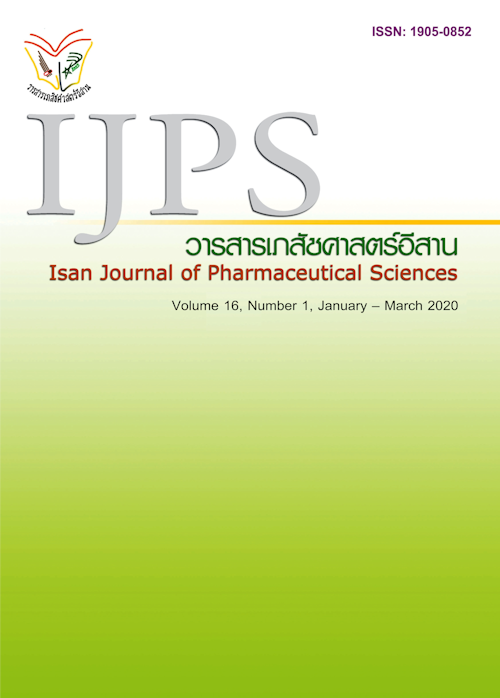Principles of Superiority, Equivalence and Non-inferiority trials
Main Article Content
Abstract
Normally, randomized controlled trials (RCTs) aim to prove that a new drug has better or superior efficacy than standard treatment or placebo. In fact, RCTs can also be used to evaluate the efficacy of a new drug having similar or equivalence efficacy, or not worse or non-inferior efficacy depending on the objectives of the research. Meanwhile, the non-inferiority trials are more frequently found in research. The aim of this article is to provide a basic understanding for readers about the distinctions among the types of research, statistical hypothesis testing, the interpretation of hypothesis testing as well as the differences between statistical significance and clinical significance.
Article Details
In the case that some parts are used by others The author must Confirm that obtaining permission to use some of the original authors. And must attach evidence That the permission has been included
References
Carey D. Efavirenz 400 mg daily remains non-inferior to 600 mg: 96 week data from the double-blind, placebo-controlled ENCORE1 study. J Int AIDS Soc 2014;17(4 suppl 3):19523.
Committee for proprietary medical product (CPMP). Points to consider on switching between superiority and non-inferiority. Br J Clin Pharmacol 2001;52(3): 223-8.
Food and drug administration (FDA). Guidance for industry: Non-inferiority clinical trials to establish effectiveness, 2016. [cited 2019 Sep 20]. Available from: https://www.fda.gov/media/78504/download
Graudins A, Meek R, Parkinson J, et al. A randomised controlled trial of paracetamol and ibuprofen with or without codeine or oxycodone as initial analgesia for adults with moderate pain from limb injury. Emerg Med Australas 2016;28(6):666–72.
Hall M, Richardson T. Basic statistics for comparing categorical data from 2 or more groups. Hosp Pediatr 2016;6(6):383–5.
Kaewkungwal J, Singhasivanon P. Textbook of Clinical Research. Pittisuttithum P, editor. 1st ed. Bangkok: Amarin Printing & Publishing; 2011.
Lesaffre E. Superiority, equivalence, and non-inferiority trials. Bull NYU Hosp Jt Dis 2008;66(2):150–4.
Mariani AW, Pêgo-Fernandes PM. Statistical significance and clinical singnificance. Sao Paulo Med J 2014;132(2):71–2.
Page P. Beyond statistical significance : Clinical interpretation of rehabilitation research literature. Int J Sports Phys Ther 2014;9(5):726–36.
Pocock SJ, McMurray JJV, Collier TJ. Making sense of statistics in clinical trial reports Part 1 of a 4-Part series on statistics for clinical trials. J Am Coll Cardiol 2015;66(22):2536–49.
Schumi J, Wittes JT. Through the looking glass : understanding non-inferiority. Trial 2011;12:106.
Shafiq N, Malhotra S. Superiority trials: raising the bar of null hypothesis statistical testing. Evid Based Med 2015;20(5):154–5.
Zhong B. How to calculate sample size in randomized controlled trial? J Thorac Dis 2009;1(1):51–4.


